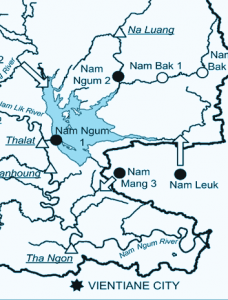Analysis of the economics of water resources investments in transboundary river systems
 My work in this domain began in 2005 when I worked with a series of teams of academics and water resources development experts that were assembled by the World Bank to address international water issues. While a member of these teams, I worked mainly with:
My work in this domain began in 2005 when I worked with a series of teams of academics and water resources development experts that were assembled by the World Bank to address international water issues. While a member of these teams, I worked mainly with:
- The Eastern Nile Technical Regional Office (ENTRO) located in Addis Ababa, on the economic analysis of potential Blue Nile hydropower projects. This work ultimately became the foundation of my dissertation at UNC-Chapel Hill, titled: “Planning water resources development in an uncertain climate future: A hydro-economic simulation framework applied to the case of the Blue Nile.”
- The South Asian Water Initiative on a Strategic Basin Assessment for the Ganges River, which included discussion of the hydropolitical context of the Ganges, analyses of the economics of hydropower development, and modeling of climate change impacts on the basin.
In somewhat related work, I also worked with a team in the Middle East and North Africa Region on the economics of wastewater reuse.
Since joining the faculty at Duke, I have continued this work on the Blue Nile and the Ganges, and also collaborated with researchers at the Nicholas Institute for Environmental Policy Solutions and the International Water Management Institute (IWMI) on understanding economic tradeoffs in the Nam Ngum Basin in Lao PDR. Building on other collaborations with IWMI researchers in Sri Lanka, I am now trying to develop a general framework for hydroeconomic analyses that can be applied in multiple and diverse river basins, to analyze water-energy-environment-food (WEEF) nexus questions. Also see a specific application in Western Nepal here.
I am also involved in an NSF-funded research project on better modeling land use and hydrological interactions in the French Broad River, a mountainous catchment of North Carolina that feeds the Tennessee River. The idea is to better model and understand the system-wide effects of physical-social feedbacks in urbanizing headwater catchments, where land and water use are evolving rapidly.
Finally, I have worked with colleagues at Duke and IWMI (mentioned above) on developing a general hydro-economic modeling framework that could be applied for planning in different river basins, and testing its application in the Mahakali and Karnali Basins in Nepal. This work was part of a larger effort by IWMI – under the Digo Jal Bikas project – to understand water-related tradeoffs and contributions to rural livelihoods and ecosystem health in the Himalaya and Terai regions of Western Nepal. A framework paper is here and a screen shot of the title page appears below.



